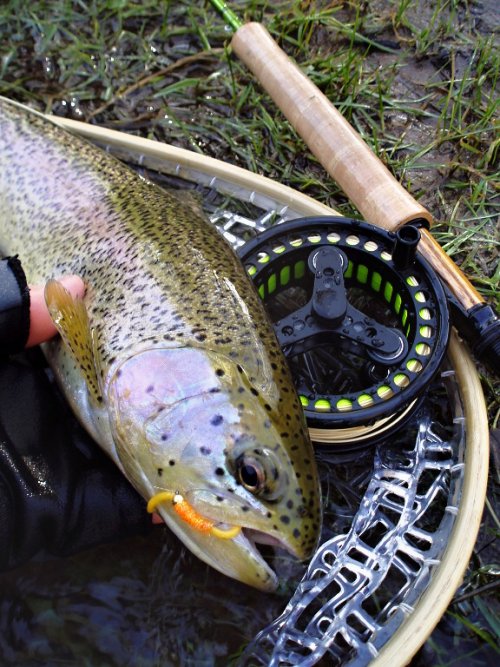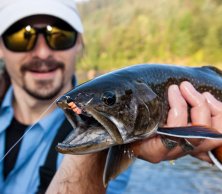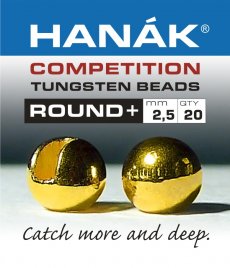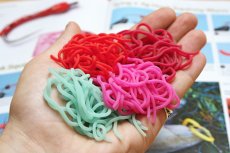The article about basic fly tying materials, which will help to everybody to create your own and most effective Squirmy Wormy patterns! Do not miss all useful tips that help to your own designs to be a magnet for most of river and stillwater fish!

Unbelievably effective and successful, on the other hand, the very controversial Squirmy Wormy patterns! These modern fly fishing lures are primarily intended for catching brown trouts, rainbow trouts, brook trouts and graylings as well! They will also find their use when fly fishing for rainbow trouts on still waters or when fishing for coarse fish, such as chub, dace, roach or barbel! Carps, breams and even tenches from slowly flowing rivers or ponds can be caugth with Squirmy Wormy flies as well.
Squirmy Wormy flies can be used to catch even predatory fish - like a perch and sometimes even smaller pike!
If large red larvae of chironomids - bloodworms live in the water, the Squirmy Wormy effect is more overwhelming.
We stock wide assortment of simple and proven Squirmy Wormy Patterns. However if you would like to tie these modern fly fishing lures, I have prepared simple guide on how to do it!

Fly tying materials for Squirmy Wormy patterns:
Hook:
The first fly hook choice for squirmy wormy flies are the jig hooks! Here I can recommend Fulling Mill Jig Hooks or Hanak Competition Jig Hook Superb but in reality any other jig hook will do the job...
Another suitable hook is Czech Nymph Hook or hook types marked as Grub. Here is one good example of the Squirmy Wormy tied on such hook: Wiggly Worm. Patterns tied with grub hooks can be fished both on the river and on the still water.
The most commonly used hook size is 10 - 14. For large and "juicy" patterns, size 8 can also be used!

Head:
We use tungsten beads in the size of 3 - 4.5 mm as the head. The most common bead size is 3.5 mm combined with the hook size 12.
For river patterns: we only use tungsten beads! Using other types of beads (e.g. brass beads) is not very meaningful because lighter beads will not pull our fly down to the bottom fast enough and will not create the desired jig effect that moves the soft silicone tail.
However when tying still water patterns: the soft and natural moving fly in the water column is welcomed. For still water patterns brass beads are great! Eventually we can tie still water Squirmy Wormy patterns unloaded - without any bead!
There is no limit to these fantasy when we choose the bead color. The most basic and the most reliable will always be the gold and silver heads that fit nearly each body color. However we can use the metallic, fluo or pastel colors that we match with the color of the body of the fly. For grayling paterns pink bead is another classic...
Body & Tail:
This part is very simple as for body and tail we use the "wormy" fly tying material - Squirmy Legs from FlyBox or Veniard Worm Body.
Here I just notice that the Veniard Worm Body is a bit stiffer, which is great for the lifetime of the fly, on the other hand the fly with shorter tails is moving less than the version tied by the Squirmy Legs!
The color scale available on the market is more than enough today. You can make traditional and proven patterns (Bloodworm red, Earthworm or San Juan red) but also to develop your own future killer patterns.

Tying Thread:
Don't use thread that is too thin or too twisted otherwise you might cut the body material when it is stretched. Great tying threads for Squirmy Wormy flies are solid and flat. For this purpose, Hends Effect Thread is great for wide range of fluo colors or you can use the neutral white Dyneema Thread if you don't fancy the fluo stuff...
You can also tie collar behind the tungsten bead, which might become another trigger point for fish.
Glue:
I intentionally write the glue, because fly tying lacquers contain chemical ingredients that etch the body material, so... Do not use the lacquer!!! For fixing the Squirmy material to the hook, the superglue is great choice! And UV Bug Bond or UV Clear Fly Finish Loon Outdoors Thick for the final drop on the knot behind the head that will be hardened with UV Flashlight.
Of course, fly tying does not have any limits, so feel free to use more types of fly tying material, whether natural and synthetic dubbings for the body or thorax, classic or blob chenilles, hen hackles, palmered bodies, rubber legs, more beads in the body etc.
Tight Lines with Squirmy Wormy! 😉
And at the end the Squirmy Wormy fly tying video from Fulling Mill - The Squirminator Jig:






















